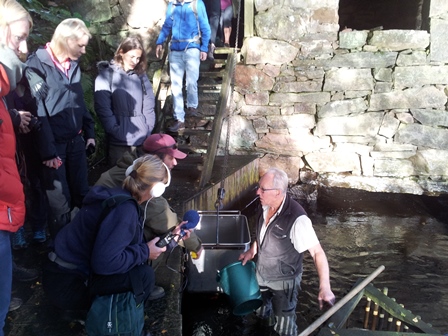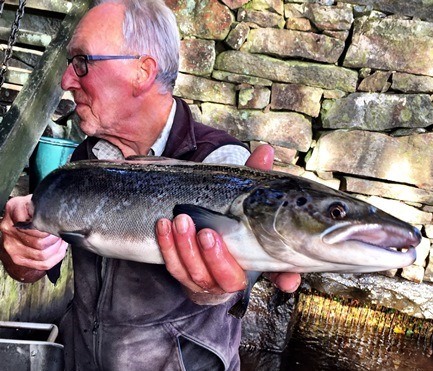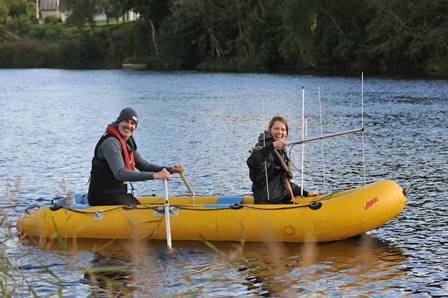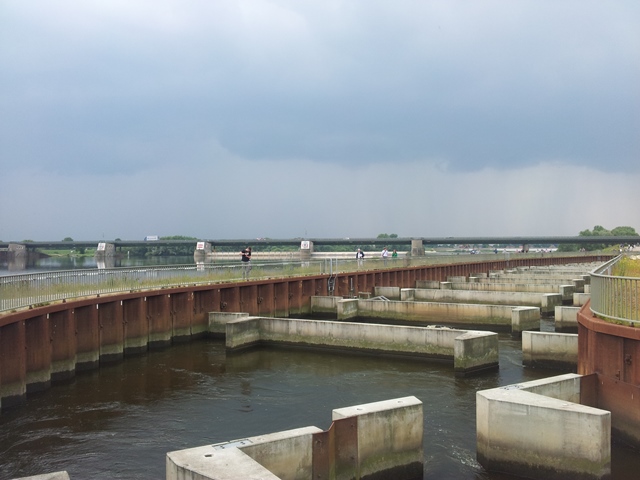International fish migration visit to the River Ätran
Posted by Daniel Nyqvist | InternationalLast week a group of people from the Fish Passage 2015-team, World Fish Migration Foundation and WWF-Netherlands visited the River Ätran in Southern Sweden. Herting, the hydropower plant located most downstream in the system, has been subject to extensive efforts to improve fish passage. A dam structure has been removed and a large nature-like fishway constructed to facilitate both upstream and downstream passage (as well as supply salmon and other fish with additional spawning habitat) and a low sloping rack has been installed to guide downstream migrating fish to a by-pass entrance by the turbine intakes. Passing migratory fish include Atlantic salmon, brown trout, sea lamprey and European eel. Olle Calles, researcher at NRRV and Karlstad University, has been involved throughout the processes and presented pre- and post-remediation data on fish-passage and told the story about salmon population in the river. The group also visited a monitoring trap and spawning areas in the River Högvadsån, a tributary to the River Ätran and was given the opportunity to track radio tagged eel in an ongoing study on eel downstream migration and dam passage. We appreciate the visit and the interesting discussions taking place throughout their stay.
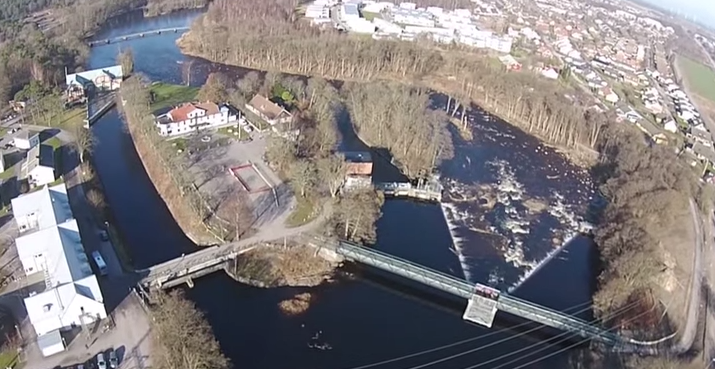
Herting hydropower plant, the naturelike fishway to the right and the intake channel to the left. In the end of the intake channel, there is a low sloping rack to guide the fish to the by-pass entrance. In the naturelike fishway the upstream migrating fish are guided to a narrow area to facilitate monitoring. (Foto from a film by Fiskevårdsteknik)



